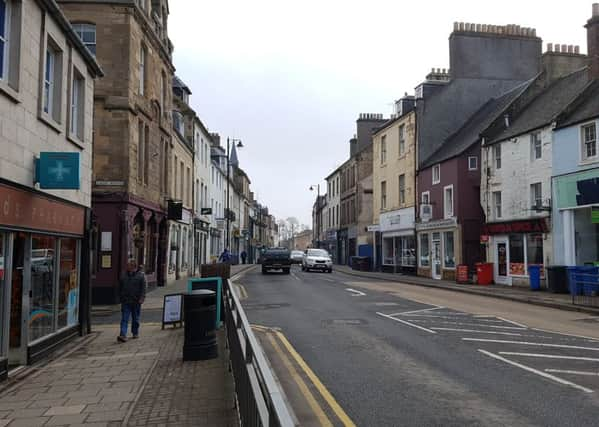Exciting plans for the future of Cupar


The organisation now has around 125 members and is involved in various projects in Cupar, from orchards and gardens to initiatives aimed at cutting single-use plastic.
Sustainable Cupar’s Town Development group is taking a wider look at the town and how it can be shaped into a more safe and encouraging environment for pedestrians and cyclists.
Advertisement
Hide AdAdvertisement
Hide Ad“Even though Scottish policy suggests pedestrians should be at the top of hierarchy for travelling, and cars at the bottom, the reality in Cupar is the opposite,” said member Gary Paterson.
“There’s little in the way of safe infrastructure for pedestrians. The driving force is getting traffic moving through the town.”
You may also be interested in:
Sustainable Cupar has two ideas which could help to change this – a 20mph speed limit in the town centre and a cycle route, known as the ‘Red Route’.
They believe Cupar is the “ideal” scale for cycling to the town centre, but say that “people don’t feel safe” because of the current speed limit.
Andy Collins, a trustee, explained: “There’s a great emphasis on getting people out of their cars, because that’s the only way you can build a community. Most people these days don’t even know who lives next door. For me, that’s the driving force of what we’re trying to do.”
The scheme has the backing of North East Fife MP Stephen Gethins, who said he was “fully supportive of any attempts to reduce the speed of traffic in Cupar”. He highlighted that it would make it safer for children walking to school, as well as making it safer for pedestrians and cyclists.
Fife Council said it had assessed the speed limits in Cupar against the national guidance – and would reassess them if the guidance was updated.
One of Sustainable Cupar’s most ambitious projects is the ‘Red Route’, which would link both sides of the town and be a safer route to Castlehill PS.
Advertisement
Hide AdAdvertisement
Hide AdThe route would start at the school, along South Road, across the river and rail line, up to Westfield, around to Bell Baxter, and finish up at Kilmaron School.
Sustainable Cupar have now applied for funding which would cover the detailed development work.
“There’s lots of issues this path needs to address – the flood, gradients, South Road crossing, land ownership. All of these things will be addressed now,” Gary explained.
“It connects two parts of the town that are currently separated by the railway and the river. It opens up a lot of opportunities. People going to the primary school can use it without having to use South Road. Same for people from the other side going to the college.”
Fife Council said it had engaged with Sustainable Cupar and Sustrans on the ‘Red Route’ and “provided information and advice to assist them taking this option forward. It was agreed at a recent meeting between Sustainable Cupar, Sustrans and Fife Council that the option of an alternative ‘Pink Route’ would also be taken forward to design stage in 2019/20”.
But perhaps Sustainable Cupar’s most exciting project is for a district heating scheme.
The organisation wants to take low-grade heating from the sewage treatment works and upgrade it into heating which can then be stored underground and used when required.
Some would be stored in a Borehold Thermal Energy Store, acting as an ‘inter-seasonal heat store’, while some would be stored in a Short Term Thermal Energy Store, in the disused sugar beet silo, and help supply peak demand.
Advertisement
Hide AdAdvertisement
Hide AdIt is envisaged that this could be used in the nearby trading and business estates, as well as some housing.
Gary explained: “Hopefully by the end of this planning application we’ll be able to generate enough interest to demonstrate partnership working, which will allow us to get the funds – around £50k – to build a detailed business case and find out if it’s feasible.”
The eventual aim is setting up an energy supply company, at least part owned by the community.
Gary added: “One of the issues with district heating is that you get a monopoly supplier. If it’s owned by the community, that helps to address that and keeps some of the profit in the community.”
For more information about Sustainble Cupar and its projects visit www.sustainablecupar.org.uk.